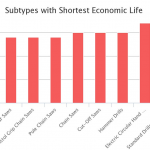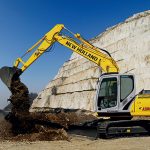One of the most significant and difficult jobs an equipment manager will do is determine ownership and operating costs. Equipment costs include a multitude of different factors like mechanics wage and maintenance hours to initial purchase price and freight. Understanding all of the factors is important, but certain factors should be given careful attention as they tend to have a greater impact on total costs, and can provide key insights into a business.
Key Takeaways for Decision Makers
EQUIPMENT MANAGER: Total equipment costs are one of the most vital components to the sustainability, functionality, and effectiveness of a business. However, each individual cost factor is equally as important as the whole due to their ability to point out failures, potential problems, achievements, and areas where changes need to be made to business leaders and decision makers.
1. Purchase Price – The initial purchase price has one of the largest impacts on total ownership and operating costs. If a business’s internal charge rates are somewhat higher than an equipment cost benchmark, like the Rental Rate Blue Book or Custom Cost Evaluator, then the purchase price should be one of the first places to look when trying to determine why. Business leaders may conclude that investing in a less expensive manufacturer or purchasing from a different dealer might be better options for the future.
2. Annual Use Hours – How many hours a machine is uses each year has the largest impact on ownership and operating costs. Lower usage usually means costs increase in order to recover fixed costs. On the flip side, higher usage can sometimes mean decreased ownership and operating costs since fixed costs will be recovered much faster. However, higher usage can also trigger increased parts and maintenance costs, and a shorter economic life. If a company is noticing high ownership and operating costs coupled with shorter than average economic life, high equipment usage could be the culprit. This could be a sign for equipment managers that similar equipment should be purchased or rented in order to better distribute usage hours, or even that operators are mishandling the machine.
3. Field Maintenance – As one would expect, the more time and money spent on field maintenance, the higher the operating costs. However, field maintenance can tell business leaders more than what it’s doing to their operating costs, it can give them a look into how mechanics and operators are treating and using the equipment. Hourly operating costs that exceed hourly ownership costs due to increased maintenance can be a huge signal that it might be time to replace the machine.
4. Mechanics Wage – The positive correlation between mechanics wage and operating costs is something to expect, and both the wage and hours worked for a mechanic is something for business leaders to keep an eye on. Unusually high operating costs due to the cost of a mechanic could be due to overpaying a mechanic, the mistreatment of equipment, insufficient repairs, or too many hours spent on maintenance. Now that Tier 4 equipment is in its final stages and still relatively new for many, mechanics qualified for these new engines is also something that should be considered.
5. Fuel Costs – There is also a positive relationship between the cost of fuel and operating costs. One can expect fuel costs to vary by location as well as seasonally. Diesel and gasoline prices both decrease during winter months and rise during the summer months. It is important to understand the regional and seasonal trends to successfully make decisions on where to preform work and when, predict future operating costs, and even detect when excessive idling may be occurring.
[su_spacer size=”30″]
[su_note note_color=”#EEE” text_color=”#555″]MagikMe Equipment offers a complete package tailored to Equipment Managers. Visit MagikMe Equipment.com to learn more. [/su_note]


